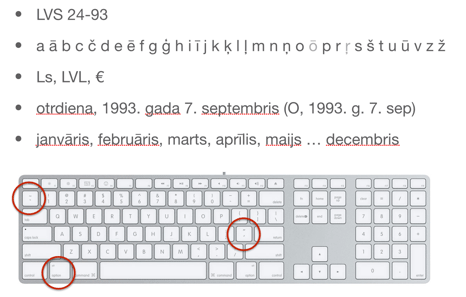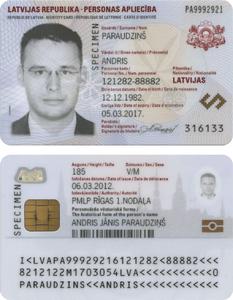Every single day, at almost every single hour, members of the Baltimore Dziesmu Svētki (Latvian Song Festival) organizing committee are hard at work on any one of various issues, concentrating on the website or the budget, the ticket sales or the schedule, the fundraising or the marketing. Online discussions are just as round-the-clock, and address every possible detail such as logo and poster designs, appropriate English translations, ways to appeal to various demographics, and plans to shake the mistaken public perception that Baltimore is just one big episode of The Wire. Each and every decision, every puzzle piece, no matter how seemingly small, has an entire story behind it. And we’ll attempt to address each of these stories in turn. This is the first in a series of articles intended to bring you behind-the-scenes while we spend the next fourteen months putting together one of the largest and most iconic events in Latvian-American society.
But for now, the basics. The sobering truth is that, up until a couple of months ago, it didn’t look like there was going to even be a festival at all in 2017, with no cities volunteering to host the event. This void would create the second-ever gap in a sixty-five year chain of Latvian-American Dziesmu Svētki, which have been held every five years since the influx of Latvian refugees post WWII. Why the hesitance?
It should come as no surprise to anyone who has ever attended a Dziesmu Svētki that organizing the event is a risky and exhausting endeavor. First, the event traditionally requires a full team of talented experts, all living within a single metropolitan area. With the active Latvian-American population experiencing a natural drop-off overall, it is not surprising that finding individual cities with appropriate personnel is also becoming gradually more difficult. Dziesmu Svētki also requires an extensive list of very specific performance venues, most of which come at a high price tag. The waning numbers of active Latvian-Americans equates to a steady drop in ticket sales over the years (1962 saw 10,000 spectators, by 1988 it was 5,000, and most recently in 2013 it was under 2,000), which in turn makes venue selection even trickier. There are virtually no venues that will accommodate both the large number of performers, and the ever-shrinking audience size, while still breaking even.
A solid crew and acceptable venues are the bare minimum requirements, but most Dziesmu Svētki hosts also know that festival attendees appreciate the convenience of having all festival settings within easy walking distance, the luxury of staying in a nice hotel, and the appeal of having a vibrant city to tour while in town. Between the unique human resource and venue restrictions, the expectation for an idyllic location, and the financial risk involved, it is no wonder that nobody was champing at the bit to host.
Marisa Gudrā, a Boston native and Washington, D.C. transplant who would eventually become the chair of our organizing committee, listened with contemplative consternation as members of the American Latvian Association board discussed these obstacles at their quarterly meeting in September. Gudrā was pursuing an advanced degree in arts management with a concentration in programming and project management in the arts, with the intention to someday eventually be involved in Dziesmu Svētki planning. Was someday already here? As if by providence, she soon thereafter received a random text message from friend and D.C. native Nik Timrots, who would eventually become the vice-chair of our organizing committee, suggesting that D.C. should host Dziesmu Svētki. Timrots was coming down from a music and danced-induced high after participating in the 2015 west coast festival in San Jose. “I realized that the 2015 Svētki were the last ones until Rīga 2018 (and the last in North America until 2019!), and I also realized I couldn’t wait that long,” Timrots explained. Realizing that there was a gap in 2017 that could be filled by any American city, he thought, “Why not us? Someone has to do it.” The two partnered up and began researching plausibility, unsure of whether much would come of their planning.
The linchpin arrived when they received word that Latvia’s Ministry of Culture was offering grant money for cultural events in the diaspora, and that the lengthy, involved application deadline was only a few days away. “It was sort of a sign and an immediate motivation for action,” Gudrā explained to me. If something really did come of their research, then they did not want to regret not having applied.
The grant application made the dream of a 2017 Dziesmu Svētki suddenly seem more attainable, and it was time to start building a team. In early November, Gudrā and Timrots called together a small group of friends, all fellow members or former members of D.C. Latvian folk dancing troupe “Namejs,” for an informal meeting at local pizza joint Lost Dog Cafe, to present their proposed plans for hosting. I admit that I arrived skeptical, aware of the aforementioned challenges and the fact that our city had neither the personnel nor the venues, and that even if it did, competing with the throngs of D.C. tourists over the preferred date of 4th of July Weekend would be impossible .
But Gudrā and Timrots proposed solutions to all of these initial hurdles: first, we would expand the organizing body to include specialists from the entire east coast (and beyond if necessary), starting with Boston’s choir director Krisīte Skare and Philadelphia’s folk dancing troupe leader Astrīda Liziņa to lead up the music and folk dance programs. Expanding our focus to the entire east coast meant that we considered multiple cities up and down the east coast, beginning with those with Latvian centers, but also examining others. One city stood out as the obvious choice: our beloved neighbor, Baltimore, Maryland, which shares a metropolitan area with D.C. The city has everything we need, from a top-rated and affordable airport, to a beautiful waterfront setting in the Inner Harbor, to easily-walkable and beautiful venues, all of which will be detailed in future installments.
With this foundation laid, we have continued wading into the depths of Dziesmu Svētku planning. It is an involved and nuanced process, some elements of which are less obvious than others. The Baltimore organizing committee has two main resources for sorting through these elements: one, our own experiences as previous festival participants, which will come into play more than one might think, and two, tremendous support and guidance from the organizers of various previous festivals, who provide the closest thing that we have to a guidebook. Over the next several months we invite you along on this life-engulfing journey as we learn the ins-and-outs of what it takes to run a (hopefully successful) Dziesmu Svētki.
“The Making of a Dziesmu Svētki” will be an ongoing series documenting the behind-the-scenes process of organizing a Latvian Song and Dance Festival.
The XIV Latvian-American Song and Dance Festival will take place in Baltimore, Maryland, from June 29th – July 3rd, 2017. For more information, please visit www.latviansongfest2017.com or write to info@latviansongfest2017.com.









